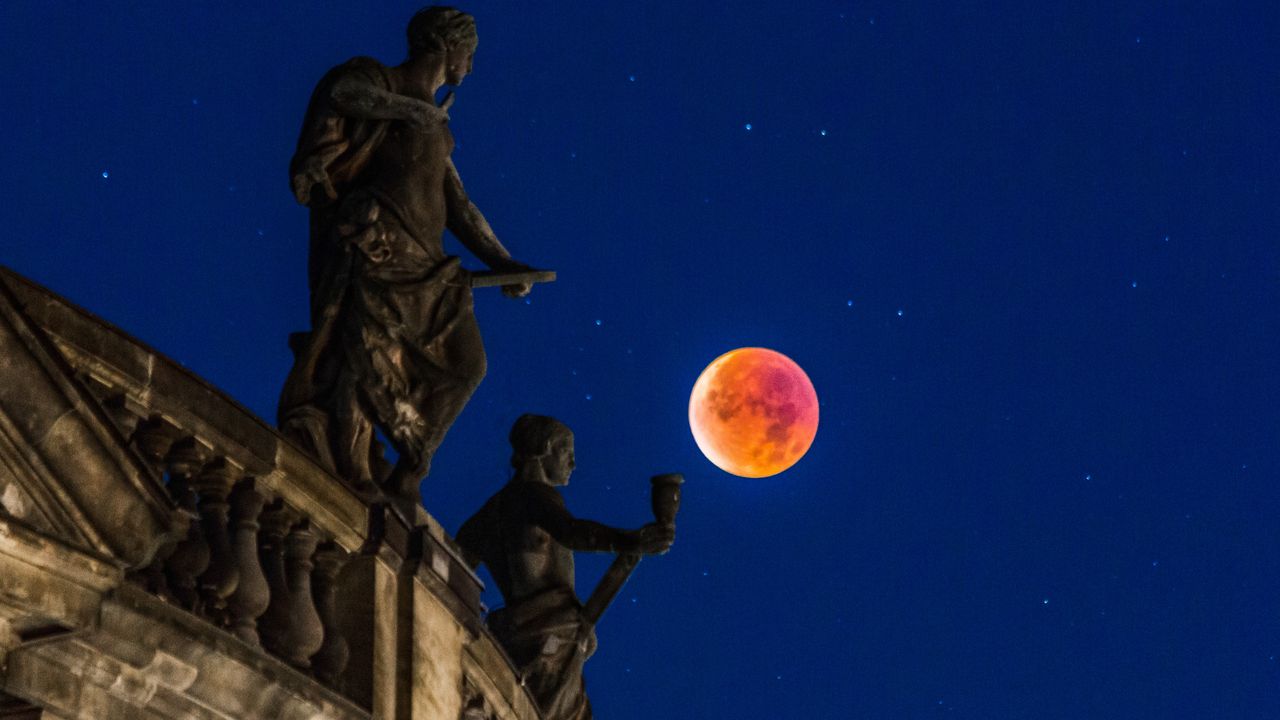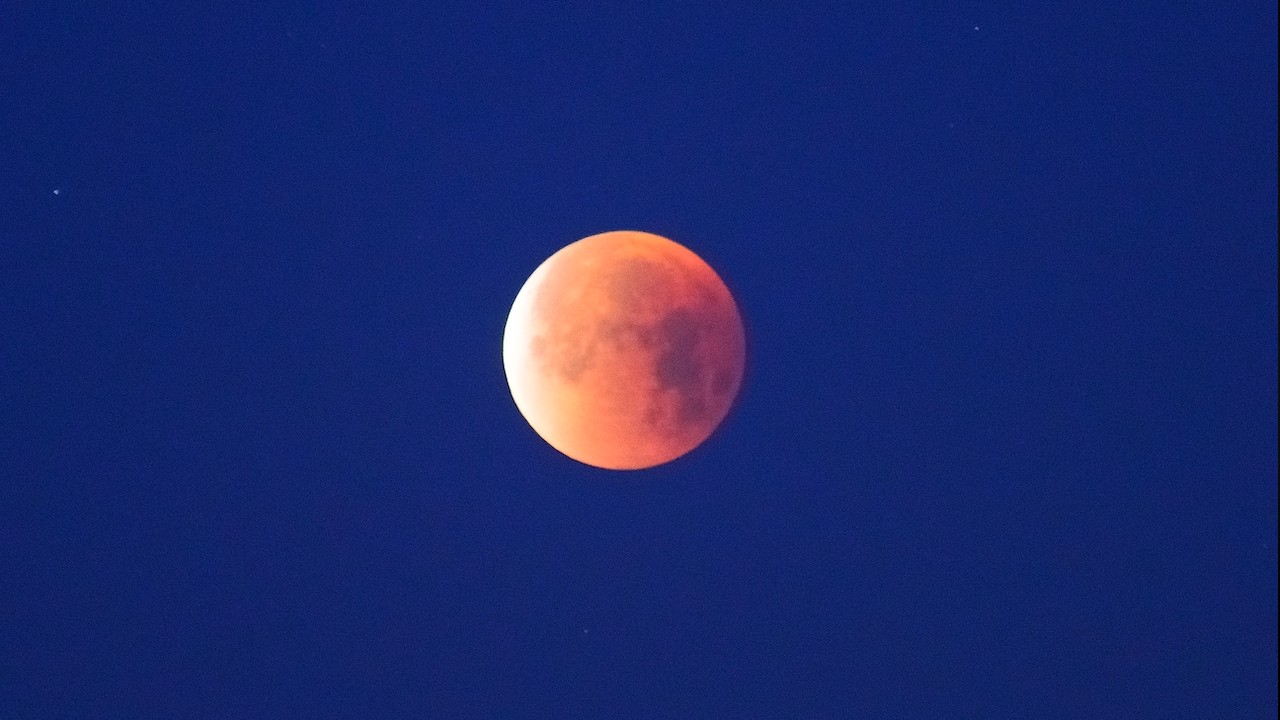
A blood moon is the dramatic red glow of the moon during a total lunar eclipse.
It happens when Earth's shadow completely covers the full moon, filtering sunlight through our atmosphere and turning the lunar surface deep red or coppery brown. Because the moon's orbit is slightly tilted, most full moons don't line up perfectly. But when they do, the result is a striking blood moon eclipse, a phenomenon that has fascinated skywatchers for centuries.
Related: Lunar eclipses 2025: When, where & how to see them
When is the next blood moon?
The next blood moon will occur on Sept. 7, 2025. It will be visible from start to finish across Asia and Western Australia. Glimpses of some phases will also be possible from Europe, Africa, eastern Australia and New Zealand. This event will not be observable from the Americas
You can catch up with the latest lunar eclipse news and events with our lunar eclipse live blog.
Why is it called a blood moon?
It's called a blood moon because during a total lunar eclipse, Earth’s atmosphere filters sunlight and scatters blue light, leaving the moon glowing red or coppery.
How often do blood moons happen?
About 29% of all lunar eclipses are total lunar eclipses. Earth experiences approximately two lunar eclipses per year. Most places on Earth can expect to see a total lunar eclipse about once every 2.5 years.
What happens during a blood moon?
Not all lunar eclipses create a blood moon. If Earth only partially blocks the sun, the darkest part of its shadow covers part of the moon's surface, creating a partial lunar eclipse; it looks as though a dark bite has been taken out of the moon. Sometimes the moon passes through the lighter outer shadow, known as the penumbra, causing a penumbral eclipse that is so subtle that only experienced skywatchers notice the faint dimming.
During a total lunar eclipse, the moon is fully inside Earth's shadow, and that's when the striking blood moon effect appears. Sunlight passing through Earth's atmosphere gets filtered and scattered, blue light is removed, leaving only the longer red and orange wavelengths to reach the moon. This is the same effect that makes sunrises and sunsets appear red, and it bathes the moon in a coppery glow.
The exact shade of a blood moon can vary depending on atmospheric conditions. Volcanic ash, wildfire smoke, dust, or pollution can make it appear darker or more intense. According to NASA, two to four lunar eclipses occur each year, and each can be seen from roughly half the planet. While planets and moons across the solar system cast shadows, only Earth produces lunar eclipses that completely cover its moon — a cosmic alignment that won’t last forever, as the moon is slowly drifting away by about 1.6 inches (4 centimeters) each year.
While there are planets and moons all over the solar system, only Earth is lucky enough to experience lunar eclipses because its shadow is just large enough to cover the moon completely. The moon is slowly drifting away from our planet (at roughly 1.6 inches or 4 centimeters a year) and this situation won't persist forever. There are roughly two to four lunar eclipses every year, according to NASA, and each one is visible over about half the Earth.
How a blood moon saved Christopher Columbus
Some ancient cultures didn't understand why the moon turned red, causing fear. At least one explorer — Christopher Columbus — used this to his advantage in 1504.
According to a Space.com Skywatching columnist Joe Rao, Columbus and his crew were stranded on an island now known as Jamaica. At first the Arawak people who lived there were welcoming, but over time, Columbus' crew grew restless and murdered or robbed some of the indigenous people. Understandably, the indigenous people weren't eager to help the crew search for food, and Columbus realized famine was drawing near.

Columbus had an almanac with him foretelling when the next lunar eclipse would take place. Armed with this information, he told the Arawak that the Christian god was unhappy that Columbus and his crew received no food. God would turn the moon red as a symbol of his anger, Columbus said. As the event took place, frightened people "with great howling and lamentation came running from every direction to the ships laden with provisions, praying to the Admiral to intercede with his god on their behalf," according to an account by Columbus' son Ferdinand.
Additional resources
If you have a budding astronomer at home who wants to learn more about eclipses check out Solar and Lunar Eclipses (Explore Outer Space) by Ruth Owen or take a look at NASA's Space Place webpage on the different types of moons.
Bibliography
K. G. Strassmeier et al "High-resolution spectroscopy and spectropolarimetry of the total lunar eclipse January 2019," Astronomy & Astrophysics, Volume 653, March 2020, https://doi.org/10.1051/0004-6361/201936091
Natural History Museum, "Lunar eclipse guide: what they are, when to see them and where," May 27, 2021.
Royal Museums Greenwich, "How to see a lunar eclipse," January, 2022.
Jessica Marshallsay, "Blood moon rising: How lunar eclipses might help us find life on other planets," The University of Queensland, January, 2022.







